
Suntory Yamazaki Whiskey Distillery
Ross-Barry FinlaysonA great way to spend the day - tasting a great whiskey and touring the distillery that makes it.

Suntory Yamazaki Distillery is located in the Yamazaki district of Osaka Prefecture and situated along the border of Kyoto Prefecture. The historic distillery was established in 1923 and is known as the birthplace of Japanese whisky. Set in the idyllic nature of Osaka, the whisky establishment works in harmony with the environment and uses the natural resources to craft its wide variety of renowned beverages. One of Suntory’s most notable drinks is its Yamazaki Single Malt Whisky, which won a gold medal at the International Spirits Challenge in 2003.
Suntory’s unique location
Inspired by Scottish whisky, Suntory’s founder, Shinjiro Torii, aimed to create a Japanese whisky molded by Japan’s unique environment and climate. The distillery is located in the misty valley of Yamazaki between Mount Tennozan and Mount Otokoyama where the Katsura, Uji, and Kizu rivers meet. This convergence creates some of Japan’s purest and softest waters. In addition to the region’s quality water, the temperature and humidity of the area creates perfect conditions for cask aging. These natural elements provide a solid base for the distillery’s outstanding and renowned whisky.
Tour the distillery!
For a behind the scenes look at the passionate process of whisky creation, take a tour of the famous distillery. The tour begins with an explanation of the whisky production process. After the short lesson, the guide will bring you through the whisky production areas, where you can observe the mashing and fermentation processes, distillation in copper stills, blending process, and storage in wooden casks. As you learn about the process, you can truly immerse yourself in the sights, sounds, and smells of whisky production. At the end of the tour, you can sample various whiskies, including unblended whisky, which is a component of the Single Malt Whisky and not for sale. Tours are available from 9:30 to 17:00 and require reservations.
Continue learning at the Whisky Museum
The Whisky Museum takes you on a journey through whisky in Japan, Suntory’s history, the creation story of the Single Malt Whisky, current whisky production processes, and future innovation. The information is complemented by exhibits displaying items such as Shinjiro Torii’s desk, authentic whisky bottles, miniature models, and contemporary video clips. After getting your fill of whisky knowledge, explore the Whisky Library, which is lined with wooden shelves displaying thousands of bottles of whisky giving the area a soft amber glow. On the same floor is a whisky-tasting counter where you can sample whiskies from around the world (for a fee). End your trip with a stop at the gift shop, which is home to some Suntory-exclusive products, and take a piece of the experience home to share with others.
Suntory is about a 10-minute walk from either Yamazaki Station on the JR Tokaido Line or Oyamazaki Station on the Hankyu Kyoto Line.

A great way to spend the day - tasting a great whiskey and touring the distillery that makes it.
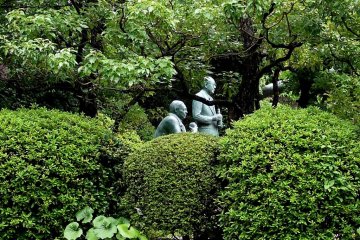
Suntory Whiskey Distillery in Yamazaki offers free tours of their whiskey library, distillery, and aging cellar and includes whiskey tasting.
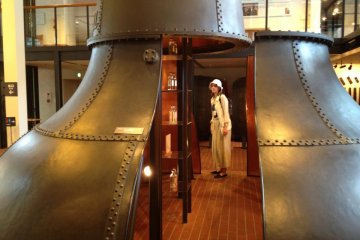
Break from Osaka's sights and Kyoto's temples and shrines to tour a distillery nestled against Tenno Mountain where the spring water alone will refresh you.

This is the place where Ryoma Sakamoto was attacked by authorities. His wife Oryo saved him by running naked from the bath to inform him of the coming danger!

Located in the bustling Fushimi district of Kyoto, at just over 400 meters or an eight-minute walk from Fushimi Momoyama Station, is the popular Ramen restaurant, Genya. This restaurant specializes in a chicken and pork broth, setting it aside from other ramen shops that use solely pork broth. The unique taste of chicken is refreshing in a bowl of ramen, as it is not very common. Another great thing about Genya is that it serves three portions - small, medium, and large - so if you are not famished, you will be able to order a small portion and still enjoy the luxury of hot noodles made fresh to order.
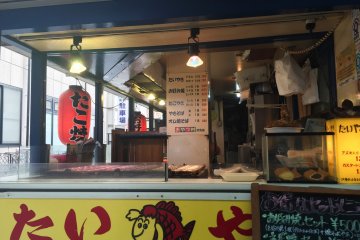
The popular Japanese cakes shaped like small fish are called "taiyaki" which translates directly to "baked seam bream. At this small but extremely popular and busy stall named Oyatsumura in Otesuji, a shopping plaza situated in Fushimi, Kyoto, you will be able to enjoy this tasty Japanese snack. Taiyaki at this store comes in two classic Japanese flavors - a creamy custard and an azuki-bean filling.
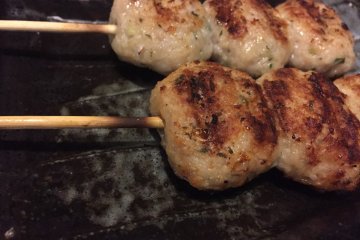
Torikizoku is a popular and affordable yakitori chain store in Japan. What is yakitori? Yakitori is grilled chicken served on wooden skewers in a variety of flavors - teriyaki, spiced salt, spicy, and more. Torikizoku serves extremely tender “Momo Yakitori,” which is the signature chicken meat skewer of many yakitori restaurants, and is a favorite for fans from around the world.
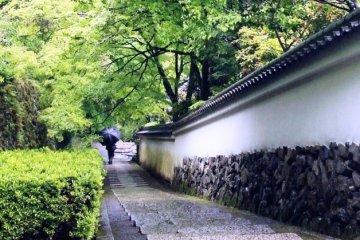
Yoshimine-dera is a temple of the Tendai school of Buddhism in the western ward of Nishikyō-ku, in Kyoto. It is built on the western hills overlooking the city. It was founded in 1029 by Gensan. The main image is a statue of thousand-armed Kannon. [Wikipedia]

The Nintendo Museum in Uji City, Kyoto, offers a rare chance to explore the full legacy of one of Japan’s most influential entertainment companies. Whether you're a lifelong fan of Mario, Zelda, Pokémon, and other beloved Nintendo franchises or simply curious about how gaming has evolved over the years, this museum offers a hands-on look into the creative history behind it all. Housed in the former Nintendo Uji Ogura Plant, the museum has been thoughtfully renovated into a modern, visitor-friendly space. The interior has been redesigned for access and accessibility while much of the entire building's original character has been preserved. Inside, you’ll find a wide-ranging showcase of the entertainment Nintendo has created since its founding in September 1889—from traditional Hanafuda playing cards to the latest Nintendo Switch. Exhibits are arranged by era on the second floor of Exhibition Building 1, allowing visitors to follow Nintendo’s story from past to present. Across several themed zones, you can view side-by-side displays of early toys, classic handhelds, and home consoles that helped shape the gaming world. Iconic systems like the Famicom (NES), Game Boy, and Nintendo 64 are on display in excellent condition. Each exhibit is accompanied by easy-to-follow visuals in both English and Japanese, along with interactive features that let you explore Nintendo’s legacy at your own pace. Another highlight of the museum is the Unique Play Experiences area on the first floor of Exhibition Building 1. This zone features interactive exhibits that capture Nintendo’s signature blend of creativity and innovation—including games that use oversized controllers and play out on giant screens. Each visitor receives 10 digital coins upon entry, which can be used to access selected exhibits. Since each activity requires a different number of coins, you’ll need to choose carefully—adding a light strategic element to your visit, much like playing a Nintendo game itself. After exploring the interactive exhibits, visitors looking for a more hands-on, creative experience can join the craft workshop. Here, you’ll create your own Hanafuda playing cards. Once your set is complete, you’ll also learn the rules and have a chance to play the game. This experience requires a same-day reservation and an additional fee, so be sure to plan ahead if you’d like to take part. Ticket information A visit to the Nintendo Museum takes about 1.5 to 2 hours, and you’ll need to plan ahead as same-day admission isn’t available at the moment. Tickets are offered through a lottery system, and you can apply up to three months before your visit using a free Nintendo Account. If your entry gets selected, make sure to pay by the 7th of the following month using a credit card. You’ll get an email with the results, but you can also check the ticketing site. Further, your QR code ticket will be ready to download from 2pm the day before your visit. On the day itself, don’t forget to bring your QR code and a valid ID. If you’re not a Japanese national, your passport is required. Once your code is scanned and you pass through security, you’ll get your official play ticket. If you bought tickets for friends or family, you can assign them their own QR codes too, as long as they have Nintendo Accounts. The ticketing system is a bit of a process, but the visit offers a fun and nostalgic dive into Nintendo’s world—something many fans find well worth the effort.

Art museum in a Taisho Era house with beautiful garden including Tadao Ando designed annex with original Monet paintings.